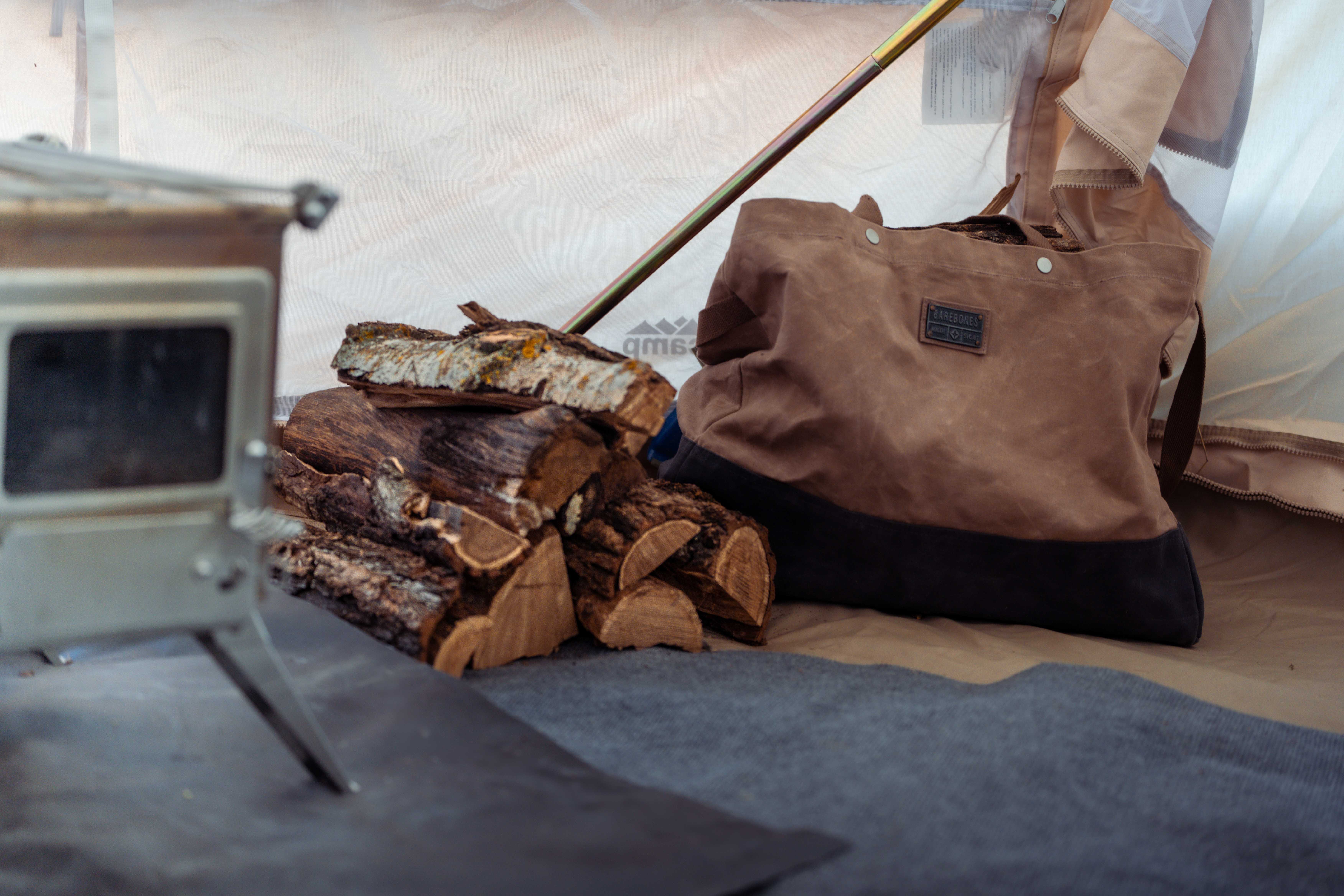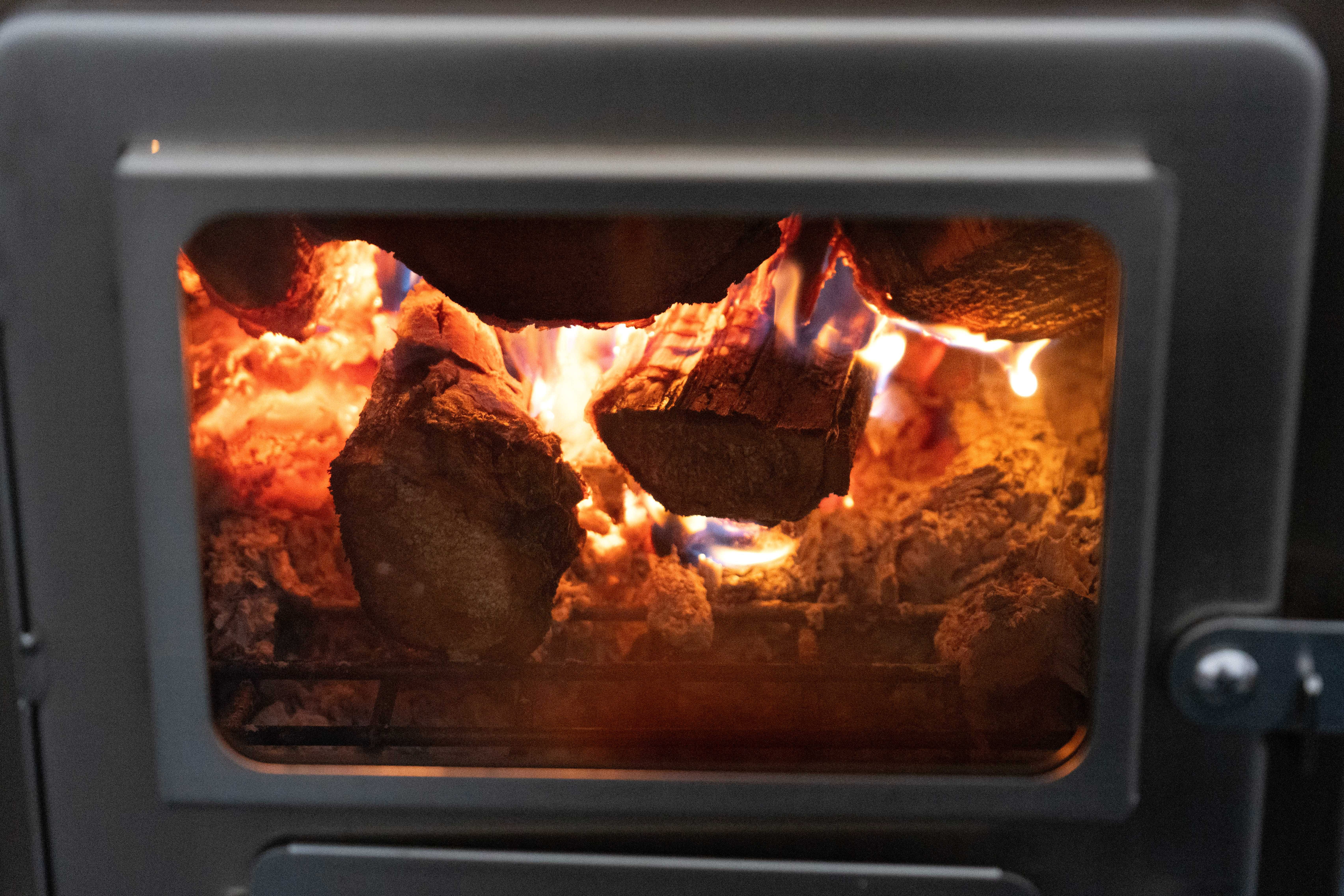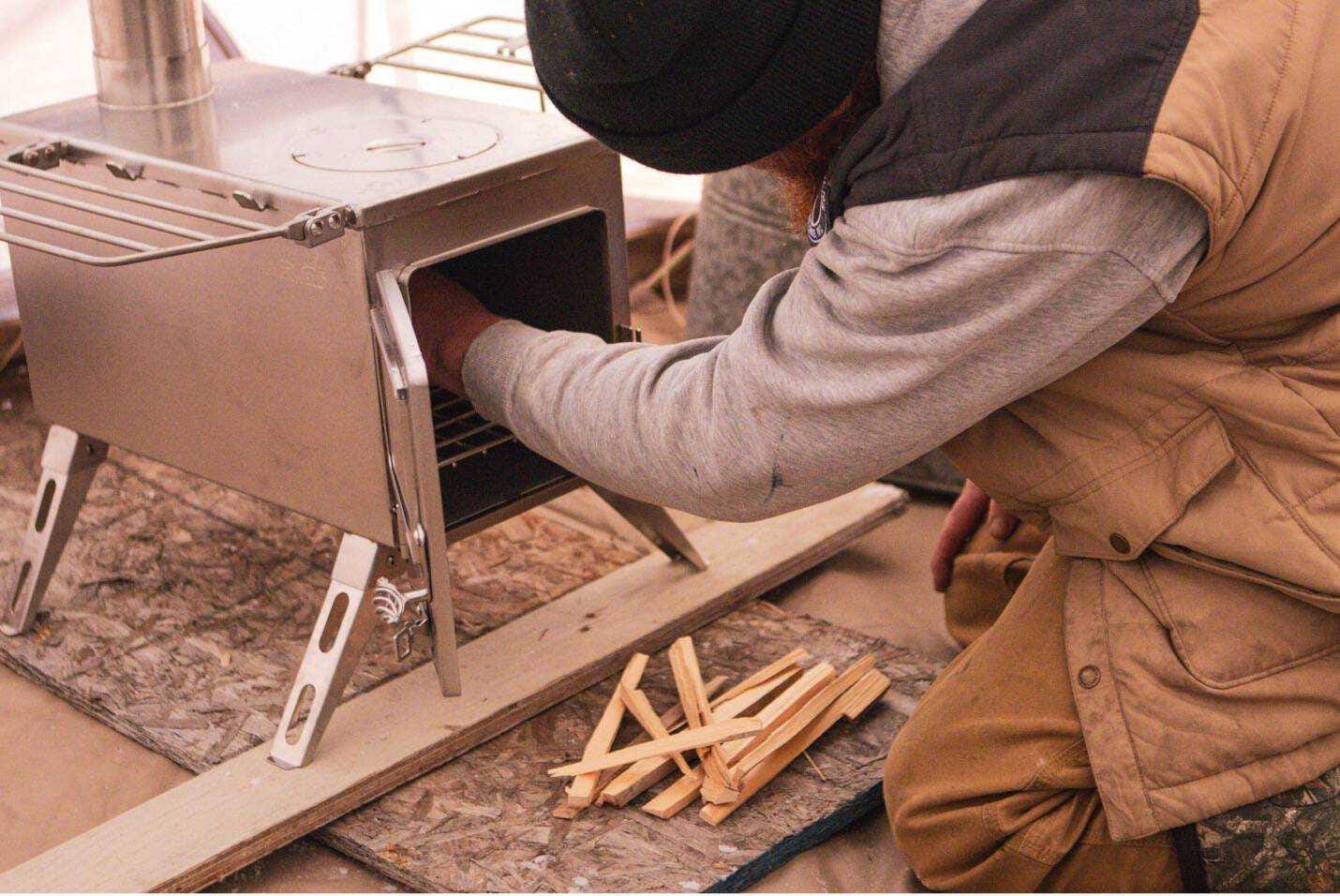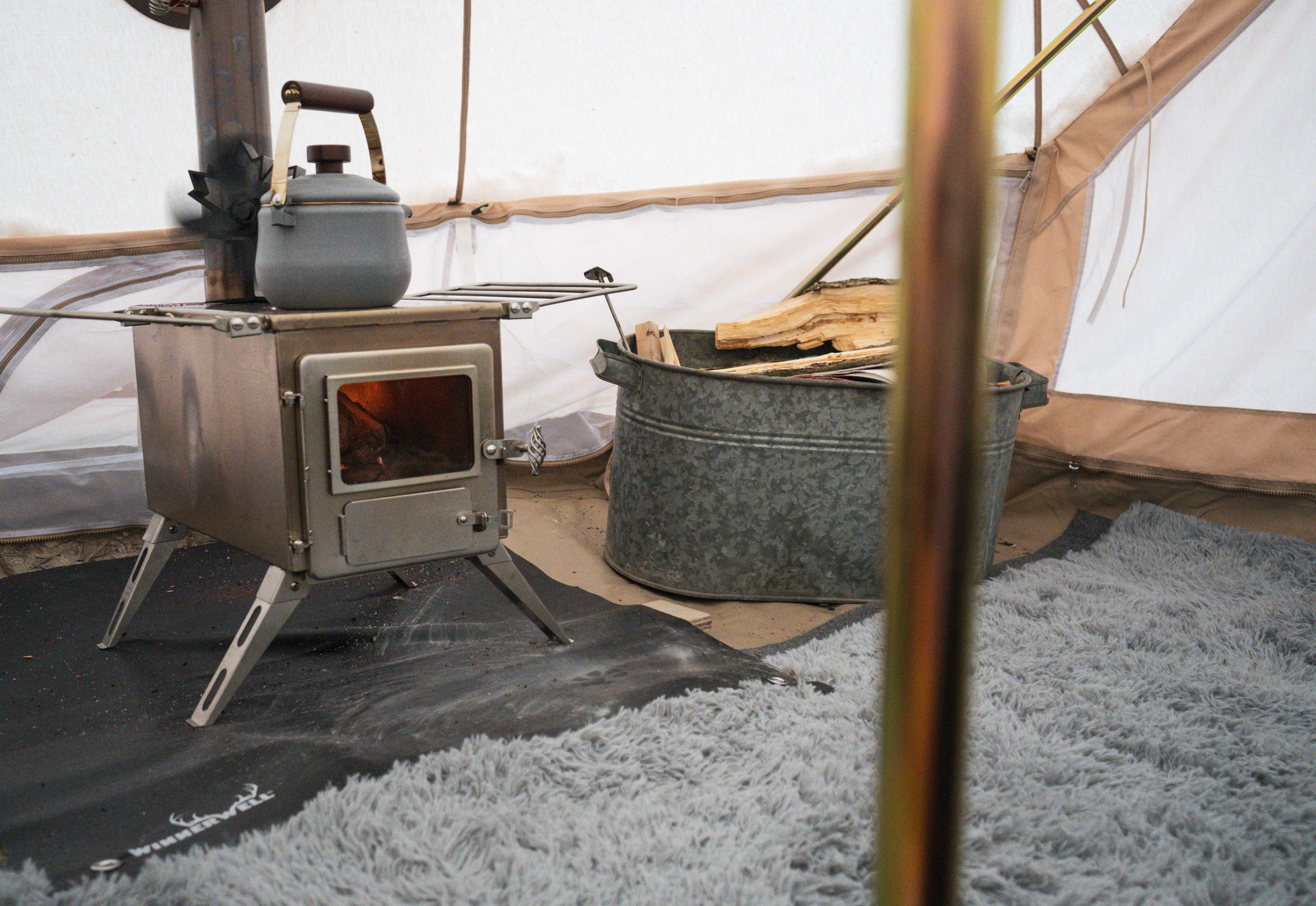
It’s never fun crawling out of your sleeping bag in the middle of a frigid night to stoke the fire (though the reward of cool air camping is darn worth it). But keeping your tent stove running safely and effectively throughout the night during a shoulder season or winter camp requires thoughtful planning, efficient processes, and teamwork.
Whether you’re setting up basecamp in snowy backcountry terrain or hunkering down for a brisk autumn getaway, staying warm is essential. Here are the top 8 tips to keep your tent stove running efficiently, maintain safety, and ensure you wake up to a toasty interior (not frozen toes).


Use Seasoned Firewood
- Burn well-seasoned hardwoods (like oak, hickory, or maple) as they produce more heat and burn longer than softwoods. Wood selection is very important in the process.
- Avoid using wet or green wood, as it creates more smoke and less heat. Using wood that is too “green” can put out your fire, especially when closing the dampeners.
Bank the Fire
- Before going to sleep, add larger logs to the stove and arrange the coals around them to slow down combustion.
- Reduce the airflow by closing the damper or vents slightly, but ensure it’s not fully shut to prevent too much smoke buildup and carbon monoxide.




Use Coal or Compressed Logs
If your stove is compatible, consider using coal or long-burning compressed logs, which can maintain heat longer than regular wood. This can be useful, but is not frequently an option in the wilderness. If you can carry it, a bag of BBQ charcoal can certainly increase the burn time.
Install a Stove Thermometer
A thermometer helps you monitor the stove’s temperature, ensuring it burns efficiently and doesn’t overheat. Too hot, and you’re burning your wood for nothing… not hot enough you risk the fire going out before you can load it again.




Insulate the Tent Floor
- Minimize cold air from the ground by using insulated floor mats or foam tiles, and add rugs for extra warmth and comfort.
- While tent liners aren’t ideal for canvas bell tents, a tent fly is a great alternative, providing additional insulation and allowing moisture to escape without sacrificing breathability.
- Ensure gaps and openings are sealed properly while maintaining ventilation for safety.
- Cold air will always cause a draft, so spot the leaks and find ways to reduce them so that your tent is not sucking in cold air.
Keep Dry Wood Inside the Tent
- Always have a good stockpile of wood—there is nothing worse than having to leave the warmth of your tent to fetch more wood.
- Store wood in a dry spot within the tent to make it easier to stoke the fire in the middle of the night.




Use a Heat Retention Device
- Place fire bricks or small stones inside the stove. These will absorb heat and radiate it over time, extending warmth after the fire dies down.
- Place heat shielding behind the stove to reflect the heat towards your sleeping area.
Set an Alarm for Refueling
Set alarms at intervals (e.g., every 2-4 hours) to refuel the stove. This ensures it stays warm but requires waking up. If you’re not alone, taking shifts is the best way to delegate the sleep to ensure you stay toasty warm.


When it comes to running your tent stove, safety isn’t just about peace of mind—it’s also a surefire way to maximize efficiency. A well-ventilated tent ensures carbon monoxide doesn’t build up while also keeping your stove burning smoothly. Bonus? Fewer safety hazards mean you’ll spend less time troubleshooting and more time enjoying your trip. Keep your pipes clear of soot, invest in a carbon monoxide detector, and have a door or window ready to pop open if backdrafts cause smoke or gases to linger.
And preparation is your best friend. Equip your camp with fire-resistant gloves, a fire extinguisher, and a backup heat plan, like a high-rated sleeping bag or emergency shelter. Reapply fire-retardant treatments to your tent over time to keep it safe against stray embers. And don’t forget the basics—install your stove properly, secure the stovepipe, and always use a fireproof mat underneath.
With these measures, you can ensure your tent stove provides warmth throughout the night while prioritizing safety and efficiency.